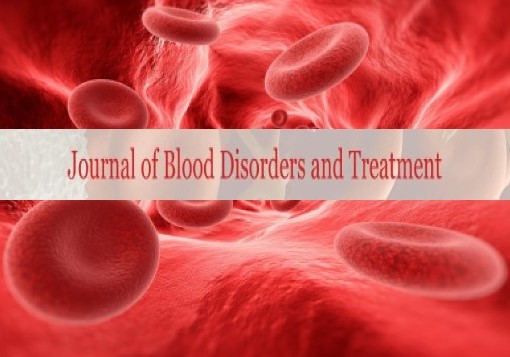Impact on the Management of Suspected Deep Vein Thrombosis
Received: 05-Nov-2021 Accepted Date: Nov 17, 2021; Published: 24-Nov-2021
Citation: Linda Baune. Impact on the Management of Suspected Deep Vein Thrombosis. J Blood Disord Treat. 2021;4(6):15.
This open-access article is distributed under the terms of the Creative Commons Attribution Non-Commercial License (CC BY-NC) (http://creativecommons.org/licenses/by-nc/4.0/), which permits reuse, distribution and reproduction of the article, provided that the original work is properly cited and the reuse is restricted to noncommercial purposes. For commercial reuse, contact reprints@pulsus.com
Introduction
Deep vein thrombosis (DVT) could be a common but slippery ailment that can result in enduring and passing on the off chance that not recognized and treated viably. Passing can happen when the venous thrombi break off and frame pneumonic emboli, which pass to and discourage the supply routes of the lungs. DVT and aspiratory embolism (PE) most regularly complicate the course of debilitated, hospitalized patients but may moreover influence mobile and something else solid people. It is evaluated that each year 600 000 patients create PE which 60 000 kick the bucket of this complication. This number surpasses the number of American ladies who pass on each year from breast cancer. PE is presently the foremost visit cause of passing related with childbirth. [1].
Deep vein thrombosis (DVT) could be a common but slippery ailment that can result in enduring and passing on the off chance that not recognized and treated viably. Passing can happen when the venous thrombi break off and frame pneumonic emboli, which pass to and discourage the supply routes of the lungs. DVT and aspiratory embolism (PE) most regularly complicate the course of debilitated, hospitalized patients but may moreover influence mobile and something else solid people. It is evaluated that each year 600 000 patients create PE which 60 000 kick the bucket of this complication. This number surpasses the number of American ladies who pass on each year from breast cancer. PE is presently the foremost visit cause of passing related with childbirth [2].
Venous thrombi are intravascular stores composed of fibrin and ruddy cells with a variable platelet and leukocyte component. They as a rule frame in districts of moderate or irritated stream in huge venous sinuses and in valve cusp pockets within the profound veins of the calf or in venous sections that have been uncovered to coordinate injury. Venous thrombi often break off to create PE. The arrangement, development, and disintegration of venous thrombi and PE reflect a adjust between the impacts of thrombogenic boosts and a assortment of defensive instruments. The thrombogenic impacts of enactment of blood coagulation are intensified by stasis and neutralized by fast stream. Venous stasis inclines the quiet to nearby thrombosis by disabling the clearance of actuated coagulation components and constraining the availability of thrombin shaped in veins to endothelial protein thrombomodulin, which is show in most noteworthy thickness within the capillaries. [3].
The instruments that ensure against thrombosis are inactivation of actuated coagulation components by circulating inhibitors, weakening and clearance of actuated coagulation components by streaming blood, hindrance of the coagulant movement of thrombin by thrombomodulin, upgrade of the anticoagulant action of thrombin by thrombomodulin through enactment of protein C, and disintegration of fibrin by the fibrinolytic framework. In patients with moderate-to-severe PTS and iliac vein hindrance, endovascular stent situation may be utilized to reestablish vein patency. In preparatory considers, stent situation in chronically blocked iliac veins contributed to ulcers recuperating, PTS indications alleviation, and decreased obstructive venous spin-off. [3].
REFERENCES
- Kruger PC, Eikelboom JW, Douketis JD, et al. Deep vein thrombosis: update on diagnosis and management. Med J Aus. 2019;210:516–24.
- Crous-Bou M and Harrington LB Environmental and genetic risk factors associated with venous thromboembolism". SeminarThromb Hemo. 2016;42:808–20.
- Raskob GE, Angchaisuksiri P, Blanco AN, et al. Thrombosis: a major contributor to global disease burden. Arteriosclerosis, Thrombo Vasc Bio. 2014;34(11):2363–71.





